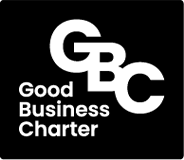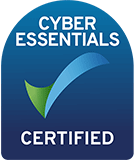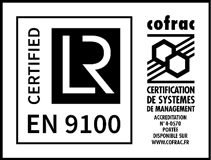In the fluid and slightly frantic world of hybrid working models, keeping tabs on documentation is much like herding cats—difficult, but not impossible.
To make your days just that much easier, we’re discussing the benefits of mailroom software. Specifically, we’re exploring how it offers the benefit of a clear audit trail, ensuring every piece of documentation is accounted for from inception to its final destination – wherever that may be.
Let’s find out how integrating mailroom software into your operations can transform how you handle documentation, making your audit trail as clear as day.
An Audit Trail? Meaning and Definitions
Before we dive deeper, let’s unpack the suitcase of knowledge on the audit trail’s meaning.
Imagine leaving digital breadcrumbs behind you as you traverse the internet; each crumb is a record of where you’ve been, what you did, and when you did it. In the world of business, these breadcrumbs are vital. They form an audit trail, a detailed, chronological ledger of transactions, activities, and operations within an organisation.
This trail is crucial for accountability, providing irrefutable evidence of actions and decisions. It’s the backbone of transparency and a key player in compliance and forensic accounting.
The Magic Wand: Mailroom Software
Now, how does mailroom software fit into this landscape? It acts as the magic wand, effortlessly creating an audit trail for all documentation that passes through your business. Here’s how:
A. Digital Reception
Upon arrival, every document, parcel, and piece of mail is scanned into the system. This initial handshake between the physical and digital worlds marks the beginning of an unbreakable chain of custody.
B. Tracking and Transparency
Each step of the mail’s journey is logged, from sorting to final delivery or archival. This process ensures that at any given moment, you can pinpoint exactly where a document is and who last handled it.
C. Secure Archival
Once a document’s lifecycle concludes, it doesn’t just fade into the abyss. Instead, it’s securely archived within the system, searchable and accessible for future reference or audits.
The Compass to Best Practices
In mastering audit trail best practices, mailroom software is your compass, guiding you toward impeccable record-keeping and process integrity. Here are a few waypoints to consider:
- Consistency: Establish a uniform process for documenting every action taken with mail and documents, ensuring every detail is recorded.
- Accessibility: Make sure records are easily accessible for auditing purposes yet secure enough to prevent unauthorised access.
- Integrity: Protect the integrity of your data through regular backups and employing robust security measures to ward off data breaches.
What Are the Four Different Types of Audit Trails?
Curiosity might beckon us to delve deeper into the ocean of knowledge and explore the four different types of audit trails that navigate through the corporate seas:
1. Transaction Audit Trails
Transaction audit trails are the lifeblood of financial integrity within an organisation. They provide a detailed record of every transaction that occurs, capturing critical information such as the date, time, participants, and the nature of each transaction.
This granularity facilitates accurate financial reporting and compliance with regulations and serves as a deterrent against fraud and embezzlement. In a litigious world with prolific transactions, maintaining a robust transaction audit trail is a smart move for financial transparency and accountability.
2. System Audit Trails
System audit trails are the guardians of IT infrastructure. They monitor and log every action taken within software systems, including system access, file modifications, and network activities. This vigilance allows IT professionals to detect unauthorised access attempts, identify potential security breaches, and trace the source of any malicious activities. In today’s digital age, where cyber threats lurk around every corner, system audit trails provide a shield of security, ensuring that the digital fortresses safeguarding sensitive information remain impregnable.
3. User Access Logs
User access logs serve as the gatekeepers of system security. They meticulously record every attempt to access the organisation’s systems, whether successful or failed. This includes login attempts, password changes, and access to restricted areas.
By keeping a watchful eye on who is knocking on the digital door, user access logs play a crucial role in preventing unauthorised access and identifying potential insider threats. They are the first line of defence in the battle against data breaches, ensuring that only those with the right keys can enter the kingdom of sensitive information.
4. Change Logs
Change logs are the historians of the digital world. They document every modification made to data or system configurations, providing a chronological record of who made the change, what was changed, and when it occurred.
This transparency is invaluable for maintaining data integrity, troubleshooting issues, and conducting post-event analyses. In environments where the accuracy and reliability of information are paramount, change logs testify to the organisation’s commitment to quality and continuous improvement.
Your Audit Trail Software
In the ever-evolving post-COVID-19 landscape, the differentiation factor for businesses lies in their agility to adapt to hybrid working models. As the corporate world leans more towards a blend of home and office work, the necessity for digitising traditional workflows has never been more pronounced.
Mailroom management software assists in creating a secure chain of custody for all deliveries. This adaptability is crucial for companies navigating the new normal of hybrid working structures, where logistical challenges abound. Tracking important documents and packages as they move into and out of your business is vital for maintaining operational fluidity.
MetaMail Inbound is your ally in establishing a comprehensive audit trail for all items entering your organisation. Traditionally, manual tracking methods have been fraught with inefficiencies and errors, often resulting in misplaced documents. However, by digitising this process, MetaMail mitigates such risks, ensuring deliveries are visible and trackable from the moment they are received.
Moreover, the flexibility of MetaMail extends to customisable workflows, catering to the diverse needs of a hybrid workforce. Whether it’s redirecting mail for staff working remotely or integrating secure locker solutions for those in the office, MetaMail adapts. The system’s ability to track deliveries through the MetaMail Outbound API from mailroom to recipient epitomises the seamless blend of security, efficiency, and adaptability.
Thus, in your journey to maintain a transparent and efficient audit trail amidst the challenges of hybrid working, MetaMail is your quintessential partner. Its capacity to digitise and streamline mailroom operations not only safeguards your logistical processes but also reinforces the integrity of your audit trail in the digital age.
Contact our team for more information on this valuable tool.





